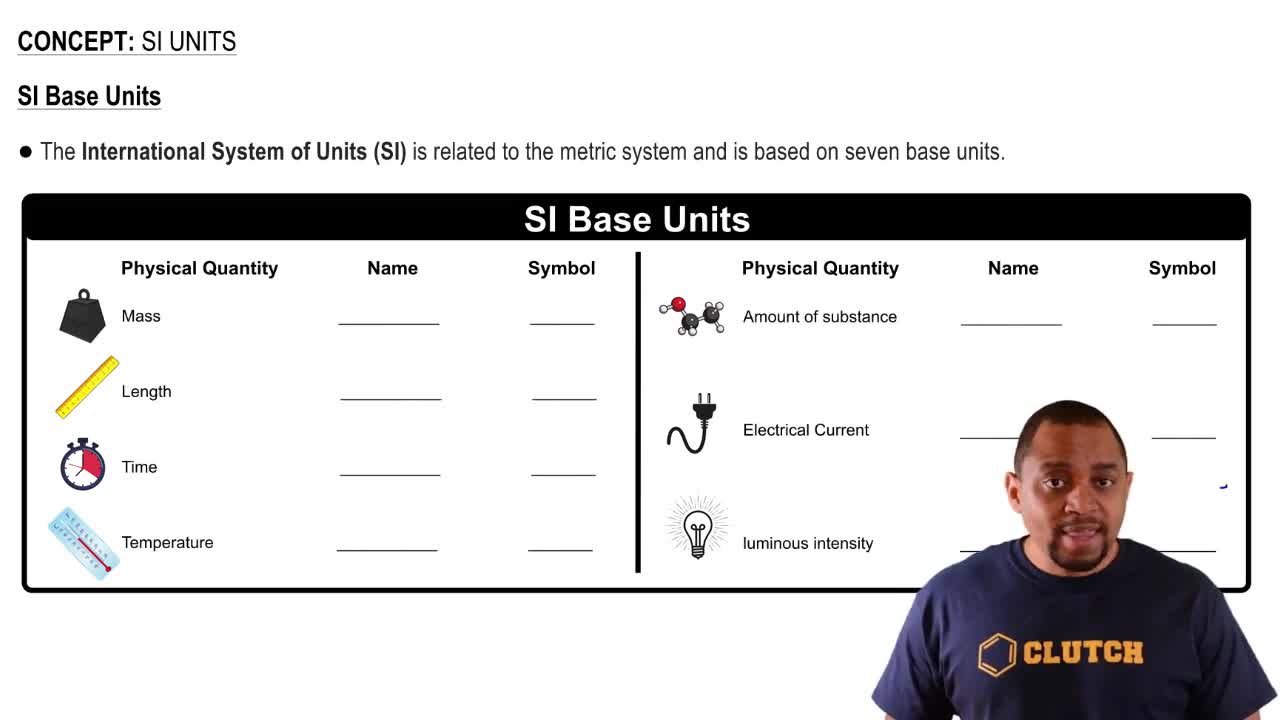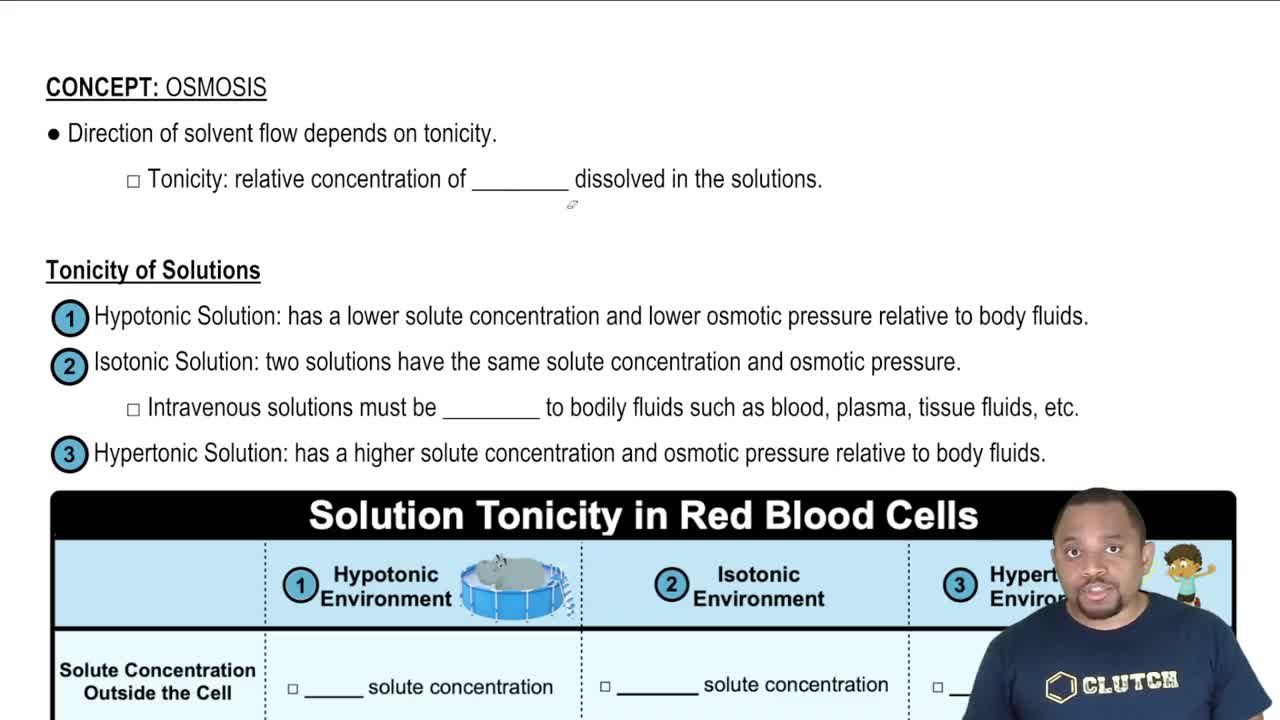(b) Will Mg(OH)2 precipitate when 4.0 g of Na2CO3 is added to 1.00 L of a solution containing 125 ppm of Mg2+?
Ch.18 - Chemistry of the Environment
Chapter 18, Problem 76b
(b) Concentrations of lead in the bloodstream are often quoted in units of μg/dL. Averaged over the entire country, the mean concentration of lead in the blood was measured to be 1.6 μg/dL in 2008. Express this concentration in ppb.
 Verified step by step guidance
Verified step by step guidance1
Understand that ppb (parts per billion) is a unit of concentration that is equivalent to micrograms of solute per liter of solution (μg/L).
Recognize that the given concentration is in μg/dL, which means micrograms per deciliter.
Convert the concentration from μg/dL to μg/L by using the conversion factor: 1 dL = 0.1 L. Therefore, multiply the given concentration by 10 to convert it to μg/L.
Since 1 μg/L is equivalent to 1 ppb, the concentration in μg/L is numerically equal to the concentration in ppb.
Conclude that the concentration in ppb is the same as the concentration in μg/L after conversion.

Verified video answer for a similar problem:
This video solution was recommended by our tutors as helpful for the problem above.
Video duration:
2mWas this helpful?
Key Concepts
Here are the essential concepts you must grasp in order to answer the question correctly.
Units of Concentration
Concentration can be expressed in various units, including micrograms per deciliter (μg/dL) and parts per billion (ppb). Understanding these units is crucial for converting between them, as they represent different scales of measurement. Specifically, 1 μg/dL is equivalent to 10 ppb, which is important for accurately interpreting and comparing concentration data.
Recommended video:
Guided course

SI Units
Conversion Factors
Conversion factors are numerical values used to convert one unit of measurement to another. In this case, the conversion from μg/dL to ppb involves knowing that 1 μg/dL equals 10 ppb. Mastery of conversion factors is essential in chemistry for ensuring that calculations involving different units are performed correctly and consistently.
Recommended video:
Guided course

Conversion Factors
Blood Lead Levels and Health Implications
Lead concentration in the bloodstream is a significant health concern, as elevated levels can lead to serious health issues, particularly in children. Understanding the implications of lead exposure and the significance of measuring blood lead levels in ppb helps contextualize the importance of monitoring and regulating environmental lead sources to protect public health.
Recommended video:
Guided course

Osmosis and Tonicity
Related Practice
Textbook Question
Textbook Question
(a) The EPA threshold for acceptable levels of lead ions in water is 615 ppb. What is the molarity of an aqueous solution with a concentration of 15 ppb?
Textbook Question
The estimated average concentration of NO2 in air in the United States in 2006 was 0.016 ppm. (a) Calculate the partial pressure of the NO2 in a sample of this air when the atmospheric pressure is 755 torr (99.1 kPa).
Textbook Question
In 1986 an electrical power plant in Taylorsville, Georgia, burned 8,376,726 tons of coal, a national record at that time. (a) Assuming that the coal was 83% carbon and 2.5% sulfur and that combustion was complete, calculate the number of tons of carbon dioxide and sulfur dioxide produced by the plant during the year.
1
views
